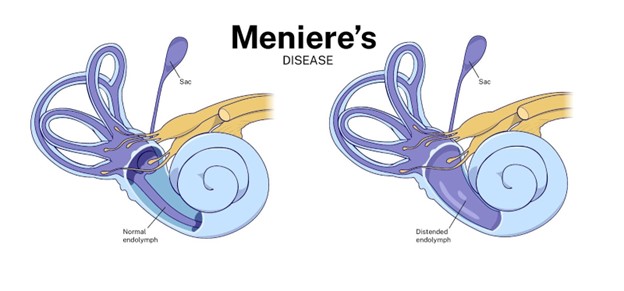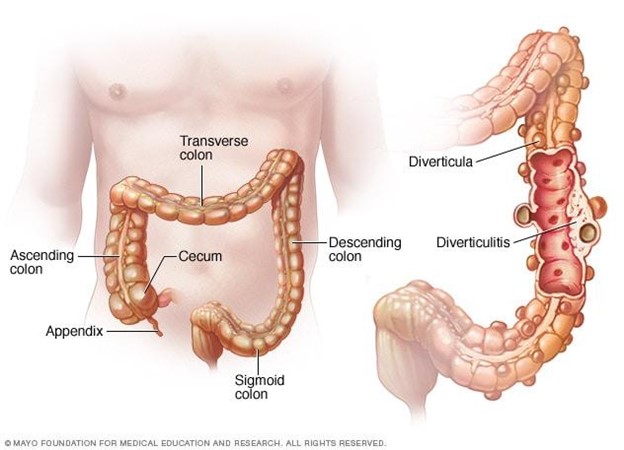A client admitted with an acute exacerbation of Ménière's disease asks the student nurse why he was prescribed diphenhydramine. Which response by the student nurse requires correction by the primary nurse?
"Ménière's disease is caused by an allergic response."
"This medication can help offset the nauseous feeling."
"Anticholinergics will help you rest."
"This medication can help reduce vomiting episodes."
The Correct Answer is A
Choice A Reason: This is incorrect because Ménière's disease is not caused by an allergic response. Ménière's disease is a disorder of the inner ear that causes vertigo, tinnitus, hearing loss, and a feeling of fullness in the ear. The exact cause of Ménière's disease is unknown, but it may be related to fluid imbalance, infection, trauma, or autoimmune reaction.
Choice B Reason: This is correct because diphenhydramine can help offset the nauseous feeling. Diphenhydramine is an antihistamine that blocks histamine receptors in the brain and inner ear, which can reduce nausea and vomiting associated with vertigo.
Choice C Reason: This is correct because anticholinergics will help you rest. Anticholinergics are a class of drugs that block acetylcholine receptors in the brain and body, which can have sedative effects and reduce motion sickness. Diphenhydramine has anticholinergic properties.
Choice D Reason: This is correct because diphenhydramine can help reduce vomiting episodes. As mentioned above, diphenhydramine can reduce nausea and vomiting by blocking histamine receptors in the brain and inner ear.

Nursing Test Bank
Naxlex Comprehensive Predictor Exams
Related Questions
Correct Answer is D
Explanation
Choice A Reason: Increasing protein from red meat is not part of client education, as it can worsen the condition and increase the risk of complications. Red meat is high in fat and low in fiber, which can cause constipation and increase the pressure in the colon. Diverticulosis is a condition where small pouches or sacs form in the wall of the colon due to weak spots or increased pressure.
Choice B Reason: Decreasing fluid intake is not part of client education, as it can worsen the condition and increase the risk of complications. Fluid intake should be increased to prevent dehydration and promote bowel movements. Diverticulosis can cause abdominal pain, bloating, cramping, and changes in bowel habits.
Choice C Reason: Incorporating soft foods that are pureed in consistency is not part of client education, as it can worsen the condition and increase the risk of complications. Soft foods are low in fiber and can cause constipation and increase the pressure in the colon. Diverticulosis can lead to diverticulitis, which is inflammation or infection of the pouches or sacs.
Choice D Reason: This is the correct choice. Increasing dietary fiber is part of client education, as it can improve the condition and prevent complications. Fiber helps soften the stool and reduce the pressure in the colon. Diverticulosis can be managed by eating a high-fiber diet, drinking plenty of fluids, exercising regularly, and avoiding straining or holding stools.

Correct Answer is C
Explanation
Choice A Reason: The test does not assess for sun protection factor, but rather for contact dermatitis. Sun protection factor is a measure of how well a sunscreen protects the skin from ultraviolet radiation, which can cause sunburn and skin damage.
Choice B Reason: The test is not inconclusive, but rather positive for some allergens and negative for others. The test involves applying small patches of different substances to the skin and observing for any reactions after 48 hours.
Choice C Reason: This is the correct choice. The presence of erythema indicates you are allergic to the allergen, as it shows inflammation and irritation of the skin due to an immune response. Erythema is redness of the skin that can be accompanied by itching, swelling, or blisters.
Choice D Reason: The areas that did not turn red do not indicate low risk for skin cancer, but rather no reaction to the allergen. Skin cancer is a malignant growth of abnormal cells in the skin that can be caused by various factors, such as genetic mutations, exposure to carcinogens, or immunosuppression.
Whether you are a student looking to ace your exams or a practicing nurse seeking to enhance your expertise , our nursing education contents will empower you with the confidence and competence to make a difference in the lives of patients and become a respected leader in the healthcare field.
Visit Naxlex, invest in your future and unlock endless possibilities with our unparalleled nursing education contents today
Report Wrong Answer on the Current Question
Do you disagree with the answer? If yes, what is your expected answer? Explain.
Kindly be descriptive with the issue you are facing.
